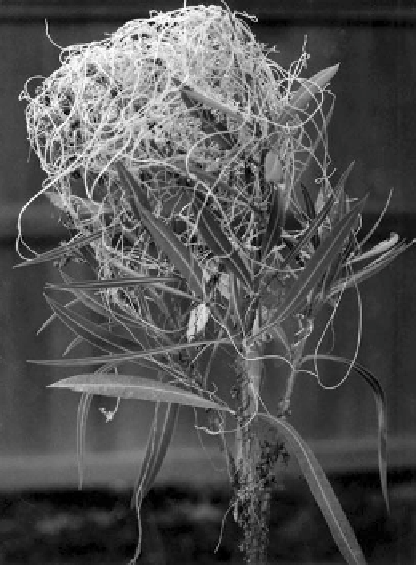Biology Reference
In-Depth Information
Cuscuta pentagona (
C. arvensis
)
Field Dod-
der
, widely distributed, most common and seri-
ous east of Mississippi on many cultivated and
wild herbaceous plants.
Cuscuta planifera
Littleseed Alfalfa Dodder
,
on some legumes in the West.
Control
Avoid dodder-infested seed. Commer-
cial seed containing one or more dodder seed per
5-g sample is prohibited entry into the United
States. Many states have laws regulating sale of
infested seed, but it may still be included inad-
vertently in a seed packet. If any contamination
with rough, flat-sided seed is found, do not use
any of the lot. Commercial dealers sometimes
clean infested seed by screening or treating with
an iron powder, which sticks to the rough dodder
seed so it can be drawn out by magnets. Before
breaking new ground for a garden on native sod,
examine it carefully. If dodder is found, burn over
the area, then hoe lightly but repeatedly for sev-
eral weeks to allow buried seed to germinate and
die. When dodder is present on cultivated plants,
the only thing to do is to remove and burn infested
parts before seed is formed. Pulling off the orange
tendrils is not sufficient. All parts of the plant
attacked must be cut off and burned, for even
a small fraction of a tendril left twined around
a stem will start growing again.
A fungus,
Colletotrichum destructivum
, has
been found to parasitize dodder and offers
a slight possibility of biological control.
Fig. 1
Dodder on Oleander
Cuscuta indecora
Bigseed Alfalfa Dodder
on
alfalfa from Colorado westward, also on sweet
pea and tomato.
Cuscuta paradoxa on rose, Texas and
Florida.


